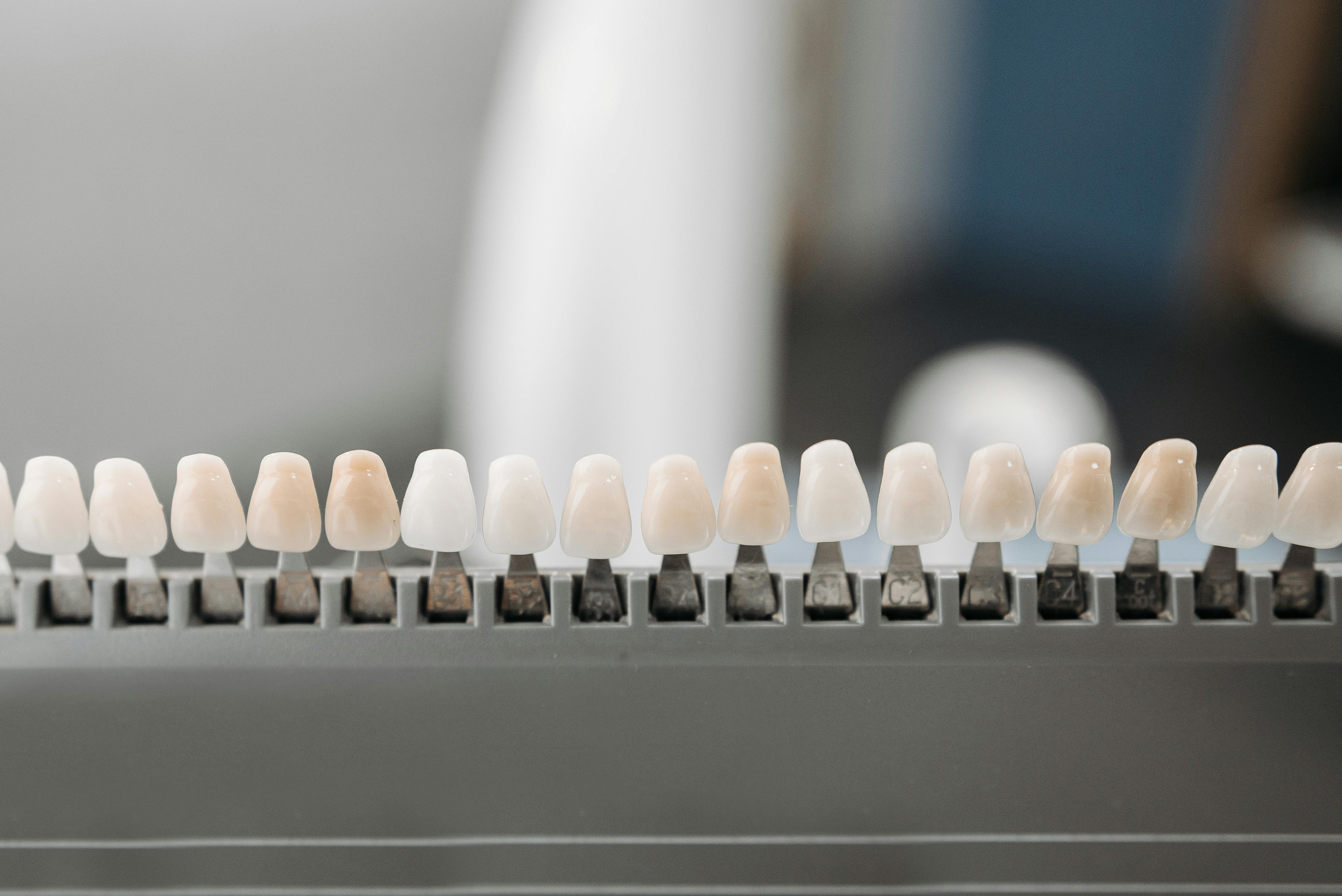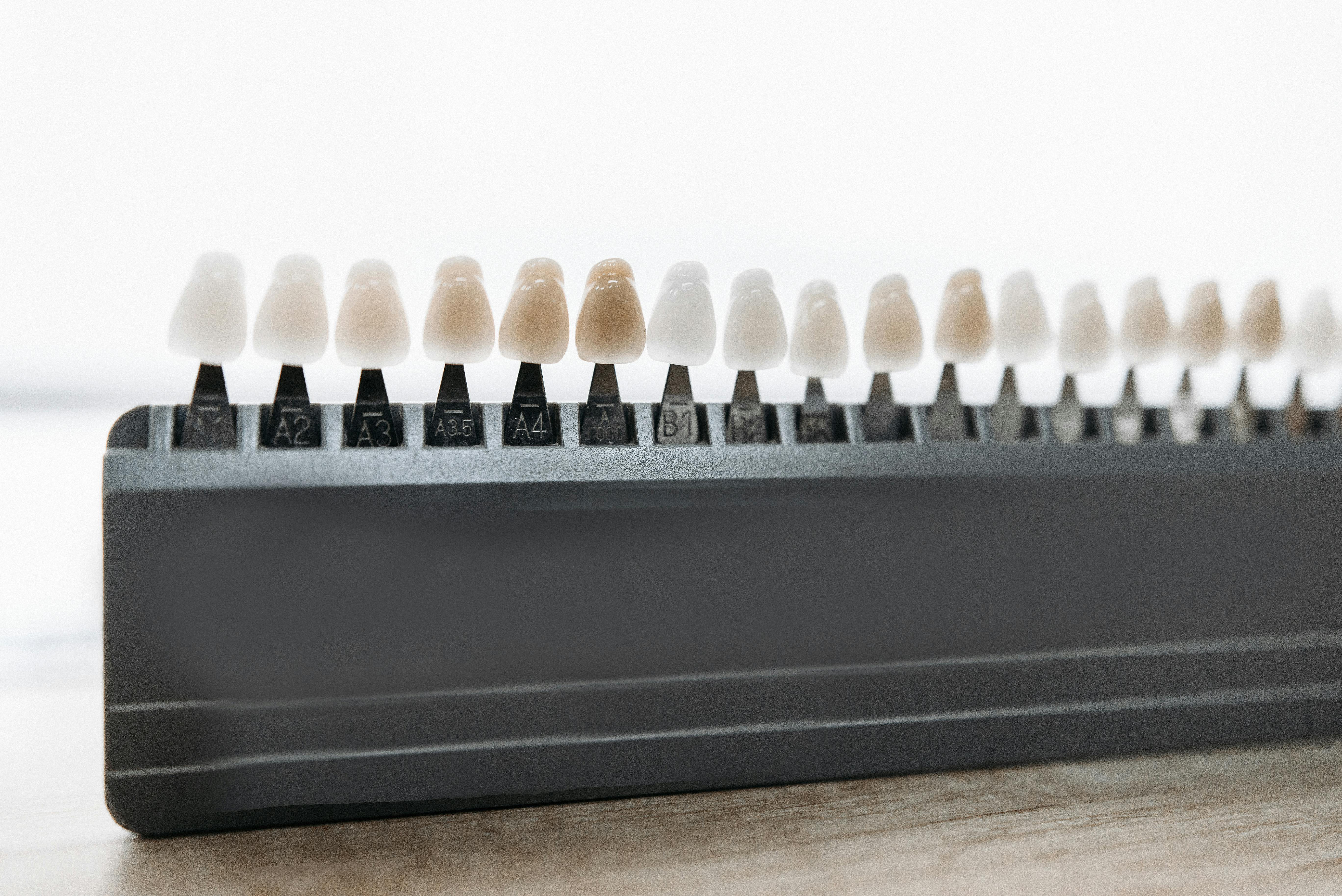Veneers are thin, custom-made shells of tooth-colored materials designed to cover the front surface of teeth to improve their appearance. Veneers are an excellent option for covering up tooth discoloration, chips, and cracks, and they can even be used to make minor adjustments to the shape and alignment of teeth. But how many teeth do veneers actually cover? This article will provide an overview of the coverage that veneers can provide.Veneers typically cover the front six to eight teeth on the upper arch and the front six to eight teeth on the lower arch.
Types of Veneers
Veneers are a great way to improve the appearance of your smile. They can be made of either porcelain or composite materials, and come in a variety of styles and colors. Porcelain veneers are the most popular type of veneer, but there are several other types that can offer different benefits to meet your individual needs. Here is an overview of the different types of veneers available:
Porcelain Veneers
Porcelain veneers are thin shells made from medical grade ceramic that attach to the front surfaces of your teeth. They are customized for each individual patient and can be used to correct discoloration, chips, gaps, and other imperfections in the teeth. Porcelain veneers look natural and are designed to resist staining from coffee, tea, and other beverages.
Composite Veneers
Composite veneers are made from a resin-based material that is applied directly to the teeth. They can be used to fix minor chips or discoloration in one visit to the dentist’s office. Composite veneers provide a natural look that is durable and long lasting.
Lumineers
Lumineers are a type of porcelain veneer that is very thin compared to traditional porcelain veneers. This makes them more comfortable for patients as they require less enamel removal than traditional porcelain veneers do. Lumineers are also reversible, so if you don’t like them you can have them removed without any permanent damage being done to your teeth.
Instant Veneer
Instant Veneer is a type of composite material that can be used for both cosmetic improvements and functional restorative treatments in one visit. It consists of an acrylic sheet with pre-made designs on it that adheres directly onto the tooth surface without any etching or grinding required before application. This makes it fast, easy, and painless for patients who need quick improvements without major dental work
Benefits of Veneers
Veneers are a popular choice for many people looking to improve the look of their smile. They are thin shells of porcelain that can be bonded to the front surfaces of teeth, providing an instant aesthetic boost. Veneers provide a range of benefits, including:
Aesthetic Appeal
Veneers can be used to correct a range of aesthetic issues, from chips and cracks in the teeth to discoloration and uneven spacing. They are available in a variety of colors and shades, allowing you to customize your smile for a perfect look.
Durability
Veneers are made from high-quality materials that are designed to last. They are extremely durable and can withstand everyday wear and tear without becoming damaged or discolored. With proper care, they can last for many years without needing to be replaced.
Minimal Maintenance Required
Veneers require very little upkeep once they have been installed. You simply need to brush and floss regularly, as well as visit your dentist every six months for check-ups and cleanings. This makes them an ideal solution for those who want an attractive smile without the hassle of extensive maintenance.
Quick Installation Process
The installation process for veneers is relatively fast and straightforward. It typically requires two visits to the dentist: one to prepare the teeth and bond the veneer, and another to adjust it if needed. The entire process usually takes just two weeks or less from start to finish.
Overall, veneers provide an excellent way to improve the appearance of your teeth with minimal effort required on your part. Whether you’re looking for a long-term solution or just want a quick fix, veneers could be right for you.
How Long Do Veneers Last?
Veneers are a cosmetic dental procedure that can improve the appearance of your teeth. They are thin shells made from tooth-colored materials, such as porcelain, and are bonded to the front of your teeth. Veneers can be used to correct a range of cosmetic dental issues, from chipped or stained teeth to gaps between teeth. But how long do they last?
The longevity of veneers depends on several factors, including the type of material used and how well you care for them. Porcelain veneers generally last between 10 and 15 years, while composite veneers typically last five to seven years. The type of adhesive used also affects their longevity; some adhesives may discolor or weaken over time, reducing the life span of the veneer.
It’s important to note that veneers require proper care and maintenance in order to last as long as possible. Good oral hygiene habits, such as brushing twice daily and flossing once daily, are essential for keeping your veneers looking their best. Avoiding hard foods and using a mouthguard when playing sports can also help preserve your veneers. Regular dental checkups are recommended as well, so any potential problems can be caught early on and addressed before they cause further damage.
In short, with proper care and maintenance, porcelain veneers can last up to 15 years while composite veneers usually last about five to seven years. Your dentist can help you determine which type is best for you based on your specific needs and lifestyle.
How Are Veneers Applied to Teeth?
Veneers are applied to teeth in a very straightforward process. First, the dentist will take an impression of the patient’s teeth, which is then sent to a dental laboratory where the veneers are constructed. Once they are completed, the patient will come back for a second appointment and the dentist will check the fit of the veneers before any adjustments are made. If all looks good, the dentist will use a special cement to bond them to the patient’s teeth. After they are firmly attached, the dentist may also use a light beam to harden and secure them in place. With proper care and maintenance, veneers can last from five to ten years before needing replacement.
Overall, applying veneers is a fairly simple process that can greatly improve your smile in no time at all!

What Is the Cost of Dental Veneers?
The cost of dental veneers can vary significantly depending on the type and number of veneers you need. Porcelain veneers, for example, typically cost between $925 to $2,500 per tooth while composite veneers can range from $250 to $1,500 per tooth. If you are getting multiple veneers, then the overall cost will increase accordingly. In addition to the cost of the veneers themselves, you may also have to pay for additional treatments such as teeth whitening or reshaping prior to getting your veneers. These additional treatments can add several hundred dollars or more to your total bill. It’s important to keep in mind that many dental insurance plans do not cover cosmetic procedures like veneers, so you should check with your insurer prior to having any work done.
Overall, dental veneers are a great way to improve your smile and boost your self-confidence. However, it’s important to factor in the cost before making any decisions about getting treatment. Make sure you shop around and get multiple quotes from different dentists so that you can compare prices and find the best deal for your particular situation.
Getting Dental Veneers
The process for getting dental veneers involves several visits to the dentist. The first visit usually consists of a consultation to discuss the patient’s desired results and to determine if veneers are the best choice for achieving those goals. During this visit, the dentist will take x-rays and impressions of the patient’s teeth to use as a guide when designing and creating the veneers. After this initial visit, a treatment plan will be formulated and discussed with the patient.
The second visit is when the dentist will prepare the teeth for the veneers by removing a small amount of enamel from each tooth that will receive a veneer. This is done to ensure that when placed, the veneer is flush with the rest of the teeth in terms of size and shape. Once this step is completed, an impression of these newly prepared teeth will be taken and sent off to a dental laboratory where technicians will create custom-made veneers according to the detailed specifications provided by your dentist.
The third visit includes bonding or cementing of each custom-made veneer onto its corresponding tooth. The dentist may then adjust or trim any excess material from around each one before polishing them to ensure they look natural and feel comfortable in your mouth. After this final step, you can enjoy your beautiful new smile!
Are There Any Risks to Getting Dental Veneers?
Dental veneers are a popular cosmetic dentistry procedure that can help improve the appearance of your smile. While there are many benefits to getting dental veneers, there are also some risks associated with the procedure. It’s important to understand these risks and make sure you are comfortable with them before deciding to get dental veneers.
The biggest risk associated with dental veneers is that they are a permanent procedure. Once the veneers are applied, they cannot be removed without damaging the teeth underneath. It’s also important to note that the color of the veneers will not change over time, so it’s important to choose a color you will be happy with for many years to come.
Another risk associated with dental veneers is that they may cause sensitivity in your teeth. This is usually temporary and can be managed with desensitizing toothpastes and other treatments recommended by your dentist. However, if you have existing tooth sensitivity or gum disease, you may not be a good candidate for dental veneers.
In addition, it’s important to remember that dental veneers require regular maintenance and care just like any other type of restoration work. You will need to take special care of your teeth and visit your dentist regularly for check-ups and cleanings in order for the veneers to last as long as possible.
Finally, it’s important to make sure you find a qualified dentist when considering dental veneers. Working with an experienced professional can help minimize any risks associated with the procedure and ensure that your results look natural and beautiful for years to come.

Conclusion
Veneers are a versatile solution to a variety of dental issues, ranging from chipped and discolored teeth to gaps in the smile. The number of teeth that veneers cover varies depending on the patient’s individual needs, but generally speaking, it is possible to cover up to eight teeth with one veneer or up to ten with two veneers.
As with any dental procedure, it is important to consult with a qualified professional to determine what type of veneer will be best for your specific needs. The dentist or orthodontist can provide you with all the information you need about how many teeth your veneers will cover and what other treatments may be available for any underlying problems.
Veneers offer an aesthetically pleasing and long-lasting solution for many dental issues. With proper care and maintenance, these porcelain shells can last for years giving you a great looking smile that you can be proud of.
No matter how many teeth you need covered up, there is sure to be a veneer option that is right for you. By consulting with an experienced professional, you can get the perfect solution that will give you the results that you are looking for.
